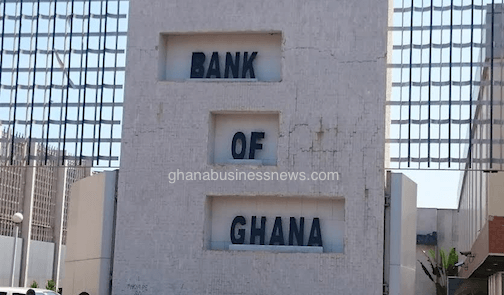Bank of Ghana reduces policy rate to 21% due to lower risk to inflation and growth
 The Monetary Policy Committee has reduced the policy rate by 150 basis points to 21 per cent from 22.5 per cent, citing lower risk to inflation and growth.
The Monetary Policy Committee has reduced the policy rate by 150 basis points to 21 per cent from 22.5 per cent, citing lower risk to inflation and growth.
“The disinflation process is still ongoing and this trend is likely to continue all through till the end of the third quarter,” Dr Ernest Addison, the Governor of the Bank of Ghana, told a press conference.
“Barring any unanticipated shocks, the current stance of monetary policy and expected stability in the exchange rate should ensure price stability.
“In the outlook, expectations are for the observed decline in headline inflation to continue and converge towards the medium-term target of 8±2 per cent in 2018,” he added.
He said the Committee would continue to monitor risks and take the necessary policy action to move headline inflation towards the medium term target.
Dr Addison said the Bank’s leading indicator of growth, the Composite Index of Economic Activity (CIEA), suggested some pickup in economic activity in the first five months of 2017, relative to the same period last year mainly driven by exports, construction and credit to the private sector.
“The latest business and consumer confidence surveys, conducted in June, also broadly reflected positive sentiments in the direction of the economy.
“While businesses were optimistic about achieving their expectations on sales and profit, consumer sentiments were largely driven by improvement in household incomes and purchases of durables,” he said.
On a year-on-year basis, bank credit to the private sector and public institutions increased by GH¢ 5.1 billion compared with GH¢2.5 billion for the same period in 2016.
Of the total credit flow, the private sector accounted for 86.5 percent, he said.
In real terms, credit to the private sector rose by 3.2 per cent in May. 2017, against 7.4 percent contraction over the same period last year.
Overall, the banking sector remains sound, well capitalised and liquid, however the quality of lending weakened over the last few years with non-performing loans reaching 21.7 per cent in May 2017.
He said implementation of the budget for the first four months of the year has remained broadly in line with the set target.
Fiscal operations for the year to April 2017 resulted in a cash deficit of 1.5 per cent of GDP, within the set target of 2.2 per cent, mainly due to expenditure controls even as revenue fell below target.
Provisional data shows that total revenue and grants for January to April 2017 were 5.4 per cent of GDP against a target of 6.5 per cent.
Dr Addison said total expenditures, including arrears clearance was 6.6 per cent of GDP compared with a budgeted estimate of 8.3 per cent. Financing of the deficit, equivalent to 1.5 per cent of GDP was mostly from domestic sources.
The total public debt at the end of May 2017 stood at GH¢137.2 billion from GH¢122.6 billion at end 2016. The total stock of the domestic debt stood at GH¢ 63.9 billion and the external debt was GH¢73.3 billion.
The increase in the debt stock was on account of issuance of long-dated domestic bonds in line with government’s debt management strategy of re-profiling the public debt as well as extending the yield curve.
Dr Addison said Ghana’s external position at the end of June 2017 had improved in line with medium-term macro-economic fundamentals.
Developments in the trade account over the first half of 2017 reflected higher export receipts, arising from increased production volumes in gold, cocoa and crude oil.
The recovery in exports combined with declining imports, resulted in an estimated trade surplus of 3.1 percent of GDP, compared with a trade deficit of 3.3 per cent recorded last year.
Provisional estimates of the balance of payments for the first quarter of 2017 indicated a current account surplus of $317 million (0.7 per cent of GDP), a turnaround from the current account deficit of $577 million (1.4 per cent of GDP) in the same period of 2016.
The capital and financial account however recorded a net outflow of $523 million (1.1 per cent of GDP) due to lower official inflows, which offset the current account surplus.
These developments resulted in a slightly improved overall balance of payments deficit of $390 million (0.8 per cent of GDP) compared with the deficit of $449 million (1.1 per cent of GDP) a year ago.
Foreign exchange market conditions remain stable supported by improved liquidity conditions, the trade surplus and increased reserves.
In the year to June 2017, the Ghana cedi recorded a depreciation of 3.7 per cent against the dollar, compared with a depreciation of 3.3 per cent reported in June 2016.
Gross International Reserves stood at $5.9 billion, translating into 3.4 months of import cover at end June 2017, compared with $4.9 billion (2.8 months of import cover) at end December 2016.
Source: GNA
